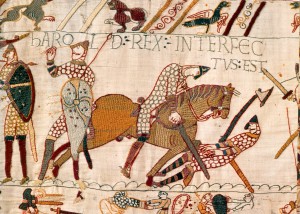There has been excellent swimming at the Parliament Hill Fields Lido this summer, especially at the ‘adults only’ sessions in the evening. The 60 x 27 metre uncovered, unheated pool is lined with gleaming metal, so immersion in it is like being cleansed in some giant sink. Roger Deakin (Waterlog, p.306) called it ‘one of the few really great swimming pools left’.
This is a popular facility, where it is possible to observe a cross-section of London society in the raw. Users come in all shapes and sizes, with or without tattoos, which are now said to adorn one in every four British adults. The proportion at the Lido seems to be even higher, and it has been interesting to observe them on some quite elderly, and apparently respectable bodies, as well as very youthful ones. My companion and I regard any form of ‘inking’ is a desecration, but I have pointed out to her that they have been in fashion in other periods of our history. The chronicler William of Malmesbury says of the English at the time of the Norman Conquest that they ‘wore short garments, reaching to the mid-knee; they had their hair cropped, their beards shaven, their arms laden with golden bracelets, their skin adorned with punctured designs; they were accustomed to eat till they were sick …’ For William, tattoos were firmly to be associated with the decadence of the age.
I was disappointed when, many years ago, I swam at the original Lido, off Venice, as the beach was crowded and somewhat featureless, and the lagoon is everywhere very shallow. It would have been a wholly unromantic experience, but I had just been reading Mann’s Death in Venice, so felt it to be worth the effort.


